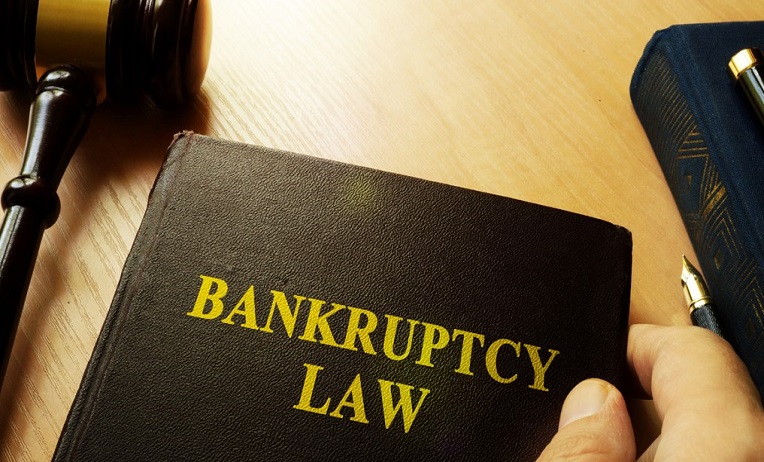The Bankruptcy Law is a set of laws and procedures designed to restructure a debtor’s financial situation and assist in enabling them to return to work.
Just as the system provides advantages to the debtor, it also ensures the creditor’s right to recover financial dues through settlement procedures.
In today’s article, we will explore the Saudi Bankruptcy Law and highlight the key features of its implementing regulations.
What is the Bankruptcy System?
The bankruptcy system consists of legal frameworks governing bankruptcy declarations for both individuals and legal entities, ensuring the protection of rights.
The system defines a debtor as someone whose debts exceed the value of their assets and is no longer capable of paying outstanding dues.
The bankruptcy procedures are primarily intended to settle debts and help the debtor resume their commercial activities.
Therefore, the Saudi Bankruptcy Law has yielded positive outcomes for debtors, creditors, and the overall economy by attracting investment and safeguarding legal rights.
Furthermore, compliance with Electronic Invoice requirements plays a crucial role in ensuring financial transparency and supporting post-bankruptcy restructuring.
What Are the Bankruptcy Procedures?
As previously mentioned, the Saudi Bankruptcy Law outlines several procedures, varying according to the debtor’s situation. These procedures include:
-
Preventive settlement.
-
Liquidation process.
-
Financial restructuring of the debtor’s status.
-
Administrative liquidation.
-
Preventive settlement for small debtors.
-
Liquidation procedures for small debtors.
-
Financial reorganization for small debtors.
Through proper documentation, such as the Electronic Invoice, the debtor’s financial obligations can be clearly tracked and addressed efficiently during these procedures.
What is the Priority of Debts?
When it comes to debt repayment, the Bankruptcy Law establishes a specific order of priority in liquidation cases.
Article 195 states that fees for the bankruptcy trustee, experts, and expenses related to the sale of bankrupt assets are to be paid first.
Debts are then settled in the following order:
-
Secured debts.
-
Secured financing.
-
A financial payment equivalent to 30 days’ wages for workers.
-
Family expenses.
-
Operating costs necessary for the debtor’s business continuity.
-
Wages of employees.
-
Unsecured debts.
-
Government fees, taxes, and other unsecured obligations.
The use of Electronic Invoice also ensures accurate financial data for prioritizing such obligations.
When is Bankruptcy Declared?
Declaring bankruptcy is not a straightforward matter, as it comes with several consequences for the company involved.
A thorough assessment of the company’s status is essential to determine whether bankruptcy is necessary or if alternative solutions exist.
Bankruptcy is declared upon satisfying the following conditions:
-
Inability to pay debts on time.
-
Providing clear evidence of financial incapacity.
-
In voluntary bankruptcy cases, obtaining majority approval is necessary.
-
Receiving court approval for bankruptcy declaration.
-
Official documentation by a certified accountant or auditor.
For more detailed information, refer to the official Saudi Bankruptcy Commission website.
Role of the Certified Public Accountant
When a company faces financial distress and approaches bankruptcy, a certified public accountant (CPA) is often consulted to evaluate the situation.
The CPA plays a vital role in Bankruptcy Services by selecting the most suitable strategies to minimize losses and stabilize the company.
The responsibilities of a CPA during bankruptcy include:
-
Assessing the company’s financial condition and proposing improvement plans.
-
Developing a structured plan to repay debts, restructure the company, or liquidate assets.
-
Communicating with creditors and stakeholders to negotiate settlements and monitor the legal process.
The CPA also ensures that the company complies with all laws and regulations during the bankruptcy phase, including the proper issuance of Electronic Invoice records.
In conclusion, today’s article offered a comprehensive overview of the new bankruptcy system in Saudi Arabia. We discussed the creditor’s position during bankruptcy declarations, explored the various bankruptcy procedures, and highlighted the pivotal role of certified accountants.
Ultimately, with structured legal procedures and digital compliance tools such as the Electronic Invoice, the Saudi bankruptcy framework is designed to support economic recovery and uphold financial justice.
Read also:
Accounting and Auditing Firms in Saudi Arabia
Business Pillars CPAs Company – Accountants and Legal Auditors
Feasibility Study in Saudi Arabia: Its Concept and Key Indicators of Success

